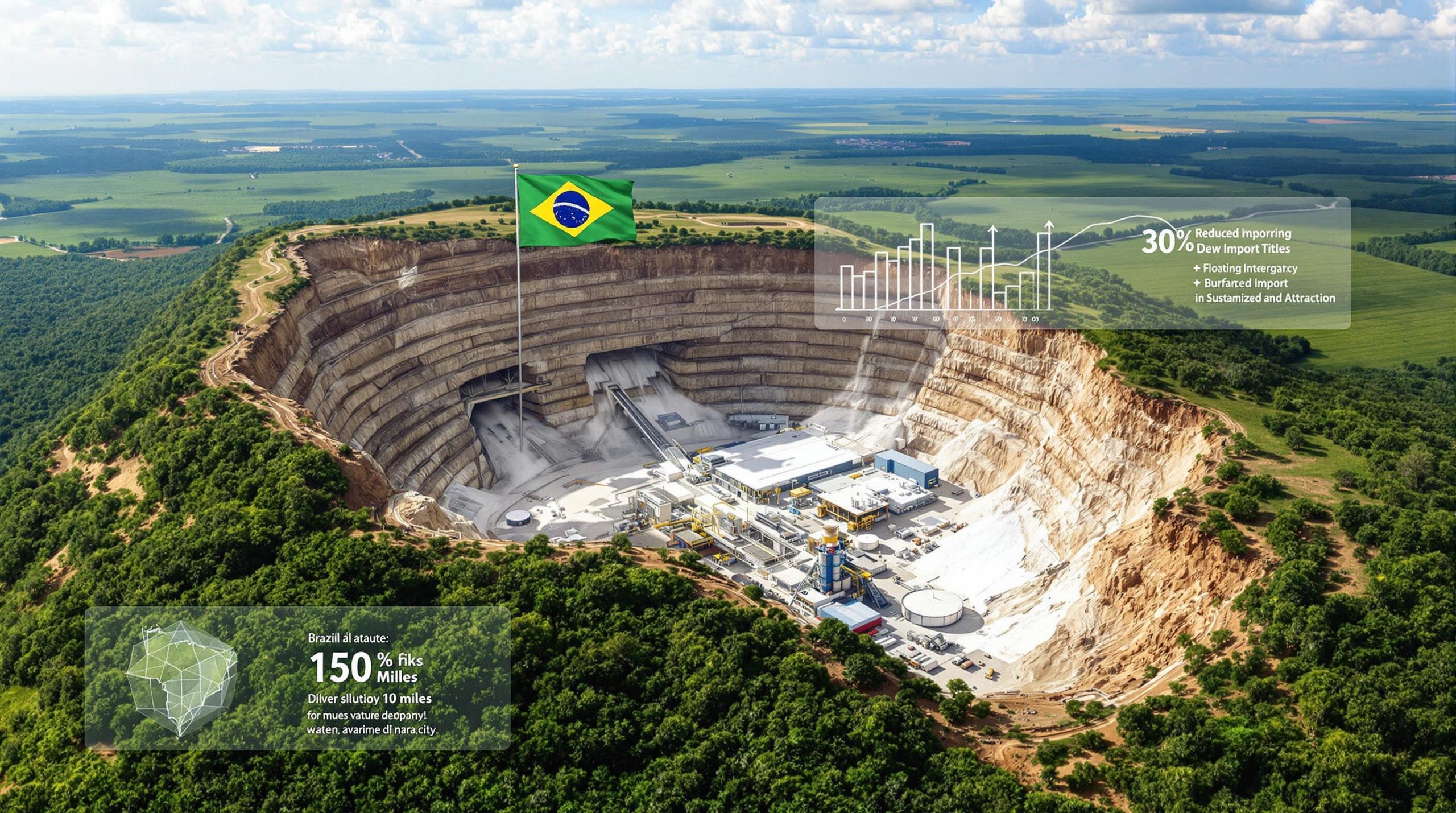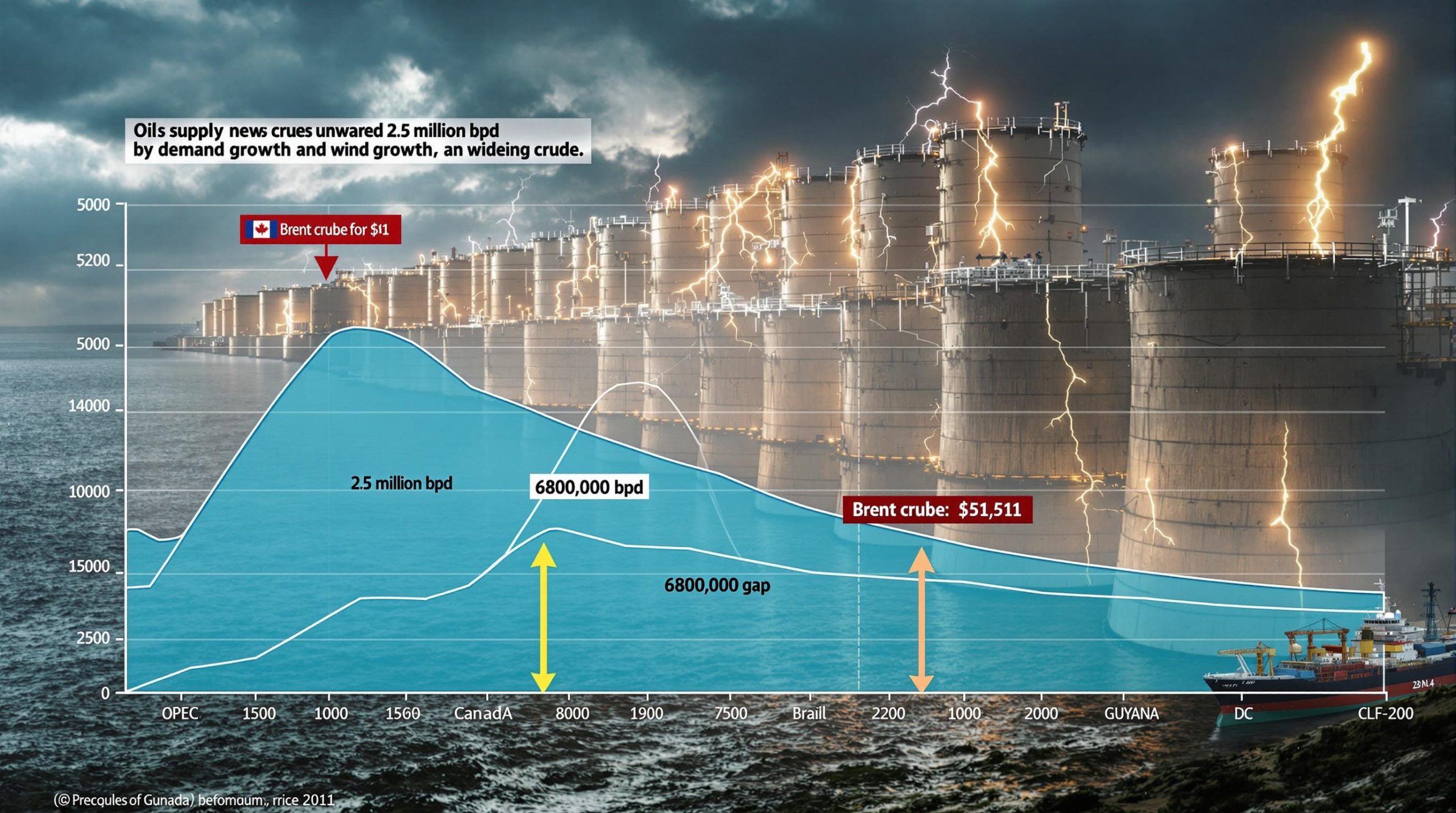What Are Treatment and Processing Charges in Copper Mining?
Treatment charges (TC) and refining charges (RC) represent the fees miners pay smelters for processing copper concentrate into refined metal. These charges form a critical pricing mechanism within the global copper supply chain, with TCs calculated per metric ton of concentrate and RCs measured in cents per pound of contained copper.
The TC/RC relationship serves as an essential barometer of market conditions, directly impacting profitability across the supply chain. When copper concentrate supply exceeds processing capacity, smelters gain negotiating power to secure higher fees. Conversely, during concentrate shortages, miners can push for lower charges, maximizing their share of revenue while squeezing smelter margins.
The Role of TC/RCs in the Copper Supply Chain
TC/RCs effectively divide the economic value between miners and smelters. This split varies based on market conditions, with TC/RC levels fluctuating in response to concentrate supply-demand dynamics, processing capacity availability, and operational costs across regions.
Japanese and Chinese smelters operate with fundamentally different cost structures and business models, creating divergent minimum acceptable TC/RC thresholds. While Japanese smelters require higher processing charges to maintain profitability, Chinese operations have demonstrated willingness to accept dramatically lower rates—even zero in recent negotiations.
How TC/RCs Impact Industry Profitability
The current market dynamics reveal a significant disparity in negotiations. While Chinese smelters accepted $0 per ton and 0 cents per pound for mid-year contracts with Chilean miner Antofagasta, Japanese smelters had secured 2025 annual terms at $25 per ton and 2.5 cents per pound. This gap underscores the competitive pressures facing different regional players.
When TC/RCs fall, miners capture a larger portion of copper's final value, while smelters face margin compression. This balance significantly impacts investment decisions across the copper supply chain, potentially affecting long-term processing capacity development and concentrate production planning.
Japanese Smelters Face Challenging Negotiations
Japanese copper smelters are currently locked in difficult negotiations with global mining companies over treatment and refining charges. These discussions have become increasingly strained as miners leverage concentrate supply constraints to push for ever-lower processing fees.
"Negotiations are proving very difficult, as the miners have proposed charges even lower than the 2025 annual levels," explained Tetsuya Tanaka, Chairman of the Japan Mining Industry Association (JMIA) and president of Mitsubishi Materials. This pressure point reflects the growing divergence between terms accepted by Chinese competitors and what Japanese operations consider economically viable.
The Widening Gap Between Chinese and Japanese Terms
The negotiating landscape reveals a stark contrast between regional smelting economics. Chinese smelters have accepted terms of $0 per metric ton and 0 cents per pound with Chilean miner Antofagasta for mid-year contracts. Meanwhile, Japanese smelters had previously secured 2025 annual terms at $25 per ton and 2.5 cents per pound—a rate now being undercut in current negotiations.
This pricing differential highlights fundamental differences in operational models and cost structures between Chinese and Japanese smelting operations. Tanaka emphasized that the terms accepted by Chinese smelters are "unsustainable for his firm," creating an increasingly precarious position for Japanese processors.
Pressure from Mining Companies
Mining companies have gained significant leverage in negotiations due to ongoing concentrate supply constraints. This power imbalance has enabled miners to propose progressively lower TC/RCs, putting severe pressure on smelter margins outside China.
"Shrinking smelting margins are placing non-Chinese smelters under severe pressure," warned Tanaka, highlighting the existential challenge facing Japanese operations. Without sustainable processing fees, these facilities face difficult decisions regarding continued operations and investment in processing capacity. The global copper supply forecast suggests this pressure may continue in the coming years.
Why Are Chinese Smelters Accepting Zero TC/RCs?
The acceptance of zero TC/RCs by Chinese smelters represents a dramatic shift in industry economics that threatens the viability of smelting operations in other regions. This pricing dynamic raises critical questions about the competitive advantages enabling Chinese facilities to operate under such challenging conditions.
Strategic Differences in Smelting Operations
Chinese smelters operate within a distinctly different economic and strategic framework than their Japanese counterparts. While Japanese operations typically function as independent profit centers requiring sustainable margins on processing activities, Chinese facilities often benefit from integration within larger industrial conglomerates and state-supported development initiatives.
This structural difference allows Chinese smelters to prioritize throughput and market share over immediate processing margins, viewing zero TC/RCs as a strategic investment in long-term market position rather than an existential threat. This approach aligns with broader Japan copper strategy considerations that are increasingly focused on supply security.
Competitive Advantages of Chinese Smelters
Several factors contribute to Chinese smelters' ability to accept dramatically reduced processing charges:
- Scale economies: Larger and newer Chinese facilities achieve lower per-ton operating costs
- Strategic integration: Many Chinese smelters operate within vertically integrated groups that capture value across multiple production stages
- Governmental support: Strategic industrial policies often provide direct and indirect benefits to Chinese processing facilities
- Operational flexibility: Chinese smelters typically maintain greater flexibility in labor costs and regulatory compliance
- Revenue diversification: Many Chinese operations generate supplementary income from precious metal recovery and other byproducts
These advantages create fundamentally different breakeven economics between Chinese and Japanese operations, explaining why terms that appear "unsustainable" to Japanese smelters can be strategically accepted by their Chinese competitors.
Impact on Non-Chinese Smelting Operations
The willingness of Chinese smelters to accept zero TC/RCs has created an untenable competitive environment for operations in Japan and other regions. As Tanaka noted, "shrinking smelting margins are placing non-Chinese smelters under severe pressure," potentially threatening their long-term viability.
This pressure intensifies concerns about further concentration of copper processing capacity in China, with implications for global supply chain security and strategic industrial capabilities in consumer nations like Japan.
How Are Japanese Smelters Responding?
Facing unprecedented pressure from miners and Chinese competition, Japanese copper smelters are pursuing multiple strategies to address the increasingly challenging market conditions.
Seeking Government Intervention
Recognizing the limitations of private negotiations in the current market environment, Japanese smelters have appealed to their government for support. "Negotiations by the private sector alone cannot easily break the deadlock, so we are asking the Japanese government to act in unison," Tanaka stated, highlighting the need for coordinated action beyond commercial discussions.
This approach may include "possible collaboration with other non-Chinese consumer countries," though specific actions remain undefined. Such collaboration could potentially involve diplomatic pressure, trade measures, or coordinated industrial policies aimed at preserving processing capacity outside China.
Government Position on Domestic Smelting
Japan's government has signaled support for maintaining domestic processing capabilities, recognizing their strategic importance. An official from Japan's industry ministry confirmed that "the government aims to maintain and strengthen domestic smelting of key minerals," acknowledging the strategic value of retaining these industrial capabilities.
However, no specific support measures for copper smelters have been announced, creating uncertainty about how Japanese operations will navigate the challenging market dynamics. The government's approach must balance immediate commercial pressures against longer-term strategic considerations regarding supply chain security and industrial capability.
What Are the Broader Implications for Global Copper Markets?
The evolving dynamics between miners and smelters extend beyond immediate pricing negotiations to raise fundamental questions about the future structure of global copper processing and supply chains.
Potential Consolidation in Smelting Industry
The growing economic disparity between Chinese and non-Chinese smelting operations could accelerate industry consolidation. Facilities unable to secure sustainable TC/RCs may face closure or acquisition, potentially concentrating global processing capacity in fewer hands and regions.
This consolidation would have significant implications for supply chain resilience, competitive dynamics, and pricing power throughout the copper value chain. As processing capacity becomes more concentrated, the bargaining position of remaining players would likely strengthen, potentially reversing current pricing trends over the longer term.
Supply Chain Security Concerns
The pressure on Japanese and other non-Chinese smelters raises important concerns about supply chain security for refined copper. As countries increasingly prioritize critical mineral security, the potential reduction in smelting capacity outside China could become a strategic vulnerability for industrial nations.
This dynamic adds another dimension to government considerations beyond purely commercial factors. Nations dependent on copper for industrial applications, renewable energy technologies, and electrification may need to evaluate policy interventions to maintain processing capabilities within their sphere of influence.
Price Implications for Refined Copper
The squeeze on smelter margins could eventually impact refined copper availability and pricing if it leads to capacity reductions. This dynamic adds another layer of complexity to copper markets already experiencing significant demand growth from energy transition technologies.
Any reduction in global smelting capacity would tighten refined copper markets, potentially accelerating price increases and creating challenges for industries dependent on steady copper supplies. This supply-side constraint would compound existing surging copper demand trends from electrification and renewable energy deployment.
How Does This Connect to Other Critical Mineral Challenges?
The challenges facing Japanese copper smelters exist within a broader context of critical mineral supply concerns, highlighting interconnected vulnerabilities across industrial supply chains.
Japan's Rare Metals Supply Concerns
Beyond copper processing challenges, Japanese companies are grappling with issues affecting other critical minerals. Tanaka noted that while "Mitsubishi Materials is seeing some recovery in tungsten procurement following China's export restrictions on rare metals, supplies remain tight and insufficient to meet domestic demand."
This situation underscores the multi-dimensional nature of critical mineral supply challenges, with Japanese industries facing constraints across multiple materials essential for high-technology manufacturing and energy transition technologies. Recent copper-uranium investment insights suggest a growing intersection between these critical mineral markets.
Strategic Stockpiling Initiatives
In response to these vulnerabilities, Japan is enhancing its approach to critical mineral security. The country aims to "strengthen its national stockpiles of critical minerals by increasing volumes or expanding the range of targeted materials," according to an industry ministry official.
However, specific details remain undisclosed for national security reasons, reflecting the strategic sensitivity of these initiatives. This stockpiling approach represents one component of a broader strategy to mitigate supply risks, complementing efforts to maintain domestic processing capabilities and diversify supply sources.
What Questions Remain About the Negotiations?
Several important questions remain unresolved regarding the ongoing negotiations between Japanese smelters and global miners, creating uncertainty about market outcomes and longer-term industry structure.
Timing and Structure of Agreements
The transcript notes that "it was unclear whether the ongoing talks are for second-half semi-annual contracts or new annual agreements running from July through next June." This timing question adds another layer of complexity to the already challenging negotiations.
The contract structure could significantly impact market dynamics, with different implications for spot market pricing and longer-term investment decisions depending on whether agreements cover six months or a full year of operations.
Potential for Compromise Solutions
The dramatic gap between Chinese and Japanese terms raises questions about whether intermediate compromise positions might emerge. Could miners and Japanese smelters find middle-ground solutions that maintain smelter viability while acknowledging market realities?
Potential compromise approaches could include variable rate structures linked to copper prices, tiered volume pricing, or inclusion of additional considerations beyond basic TC/RC rates. Creative solutions may be necessary to bridge the current negotiating divide.
Long-term Sustainability of the Smelting Business Model
The current negotiations highlight fundamental questions about the viability of traditional smelting business models in a market increasingly dominated by Chinese capacity. Japanese and other non-Chinese smelters may need to explore structural changes to remain competitive in this challenging environment.
Potential adaptations could include greater vertical integration, enhanced recovery of byproduct metals, energy efficiency improvements, or development of specialized processing capabilities for complex or high-impurity concentrates that command premium treatment charges. Industry analysts continue to monitor copper price predictions for clues about future market direction.
FAQs About Copper Smelting Negotiations
What factors determine TC/RC levels in copper markets?
TC/RC levels are primarily determined by the balance between copper concentrate supply and smelting capacity. When concentrate is abundant relative to processing capacity, smelters gain negotiating leverage and can secure higher fees. Conversely, during periods of concentrate scarcity, miners can push for lower processing charges.
Additional factors influencing TC/RC levels include:
- Energy costs, which represent a significant portion of smelting expenses
- Environmental regulations that impact compliance costs and operational parameters
- Transportation expenses for moving concentrate from mines to processing facilities
- Strategic considerations related to supply chain security and market access
- Competitive dynamics between regional smelting operations
These factors combine to create the complex negotiating environment currently challenging Japanese smelters.
Why can't Japanese smelters accept the same terms as Chinese competitors?
Japanese smelters operate with fundamentally different cost structures and business models than their Chinese counterparts. Key differences include:
- Higher labor costs and stricter employment regulations
- More stringent environmental compliance requirements
- Older facilities with higher maintenance and energy costs
- Limited government support compared to strategic Chinese industries
- Different corporate structures and shareholder expectations
Without the same scale advantages or governmental support, Japanese operations require higher TC/RCs to maintain profitability. The terms currently accepted by Chinese smelters would create unsustainable losses for many Japanese facilities.
How might government intervention affect these negotiations?
Government intervention could take various forms with different implications for market dynamics:
- Diplomatic pressure on mining countries to ensure stable supply conditions
- Trade measures affecting concentrate imports or refined copper exports
- Financial support through subsidies, tax incentives, or preferential financing
- Strategic partnerships with other consuming nations to strengthen negotiating position
- Regulatory adjustments to reduce operational costs for domestic smelters
The effectiveness of such measures would depend on their scope, implementation timing, and coordination with other consuming nations. Unilateral actions might offer short-term relief but could distort market dynamics over the longer term.
What are the environmental implications of shifting copper smelting capacity?
Changes in the global distribution of copper smelting capacity carry significant environmental implications. Different regions operate under varying environmental standards, potentially leading to higher overall emissions if production shifts to areas with less stringent regulations.
Modern copper smelters incorporate advanced emissions control technologies and energy efficiency measures that substantially reduce environmental impacts compared to older facilities. However, these technologies require significant capital investment and increase operating costs, contributing to the competitive challenges facing Japanese smelters.
The environmental calculus extends beyond direct emissions to consider the carbon footprint of transporting concentrate and refined copper across greater distances as processing capacity becomes more concentrated in specific regions.
By balancing economic considerations with environmental standards and supply chain security concerns, stakeholders can work toward a more sustainable and resilient copper processing industry that meets growing global demand while minimizing environmental impacts.
Want to Catch the Next Major Mineral Discovery?
Stay ahead of the market with real-time alerts on significant ASX mineral discoveries, powered by Discovery Alert's proprietary Discovery IQ model. Visit the Discovery Alert discoveries page to understand how major mineral discoveries can lead to substantial market returns and begin your 30-day free trial today.




